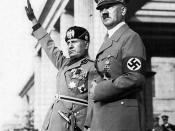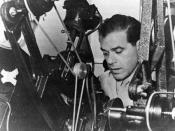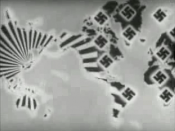In the era preceding, during, and after World War Two, documentaries and real-life depictions about the war, veterans, patriotism, post-war trauma...etc., exploded on the home front. John Huston's "Let There Be Light" and Frank Capra's "Prelude To War" are both documentary films about World War Two, however filmed for very divergent purposes and in very different angles. This paper will attempt to explore and compare the differences of both wartime documentaries, and evaluate the effectiveness of their balance between artifice and authenticity.
Huston's 1946 film "Let There Be Light" was filmed with the intent to document the treatment and rehabilitation of psychologically damaged World War Two veterans. However, due to the explicit images of stumbling, shell-shocked soldiers, the United States War Department forbade civilian circulation on grounds that the film was demoralizing and detrimental to military participants.
While Huston battled US officials for permission to release "Let There Be Light," Capra's film "Prelude To War" was paid for by the government.
This 1942 documentary was a powerful propaganda piece which chronicled the events leading up to World War Two, including the rise of fascism in Germany and Italy, and the Japanese attack on China. The film was intended to stir up support for the war effort.
"Let There Be Light" conveys a range of viewpoints and purposes: 1) To create a sympathetic documentary on the recovery of the psycho-neurotic soldier which would educate civilians to accommodate and accept them into society. 2) To depict post-war conditions which were more horrific than the battlefield. 3) To demonstrate that neurotic problems could be successfully treated, but at the same time the audience is left to ponder the fate of those patients who did not recover.
Huston brought his cameras to Mason General mental hospital in Long Island, where...


